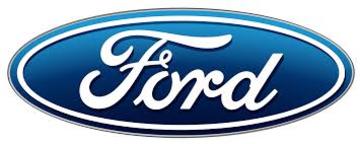Jack Telnack
Designer
Jack Telnack is the former global Vice President of Design of the Ford Motor Company from 1980 to 1997. After his training at the Art Center College of Design, Telnack began working as a designer for Ford in 1958, and became the head stylist of the Lincoln-Mercury Division in 1965. In 1966, he became the chief designer of Ford's Australian branch and served as the Vice President of Design for Ford of Europe in 1974. Telnack retired from his post at the end of 1997, and was replaced by J Mays.
Telnack and his team of designers were responsible for ushering a new era of aerodynamic design to America's mainstream marketplace. Cars like the 1979 Ford Mustang, 1983 Ford Thunderbird, 1984 Ford Tempo and Lincoln Mark VII were moderate successes that showed Ford's intention to change their traditional design language for a more contemporary, European style.
Subject ID: 40585
MoreJack Telnack is the former global Vice President of Design of the Ford Motor Company from 1980 to 1997. After his training at the Art Center College of Design, Telnack began working as a designer for Ford in 1958, and became the head stylist of the Lincoln-Mercury Division in 1965. In 1966, he became the chief designer of Ford's Australian branch and served as the Vice President of Design for Ford of Europe in 1974. Telnack retired from his post at the end of 1997, and was replaced by J Mays.
Telnack and his team of designers were responsible for ushering a new era of aerodynamic design to America's mainstream marketplace. Cars like the 1979 Ford Mustang, 1983 Ford Thunderbird, 1984 Ford Tempo and Lincoln Mark VII were moderate successes that showed Ford's intention to change their traditional design language for a more contemporary, European style.
Telnack's team of designers, known collectively as "Team Taurus", were responsible for the 1986 Ford Taurus: a car widely acknowledged as the main reason why Ford Motor Company's turnaround strategy was successful during this period. The Taurus' wind cheating design language influenced everything from the Ford F-150 to the Lincoln Town Car in the 1990s. Ford Taurus LX.
Lesser known cars like the 1986 Mercury Sable boasted a wind cheating drag coefficient of 0.29. The Sable's light bar grille continued to be a Mercury design hallmark for the next decade. Telnack also helped shape the 1989 Ford Probe and 1993 Lincoln Mark VIII.
Toward the end of his career, Telnack worked on the ovoid themed Taurus from 1996. While criticized widely and deemed too radical for the market's tastes, Telnack also created the "New Edge" style that brought about cars like the 1996 Ford Ka, Ford GT90 concept car and influenced the design of the 1998 Ford Focus.
Subject ID: 40585
Subject ID: 40585
